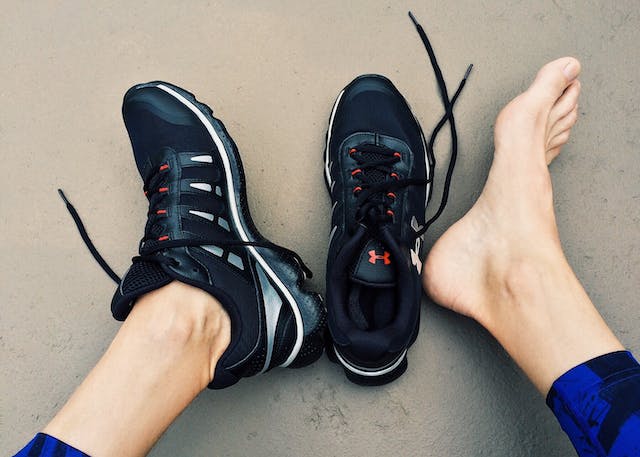Hammer toe is a podiatric condition that extends beyond mere cosmetic concern, delving into the intricate interplay of muscles, tendons, and joint structures in the toes. Unlike a straightforward deformity, the hammer toe is characterized by an abnormal bending of the toe at the joints, resulting in a hammer-like appearance. This condition primarily affects the second, third, or fourth toe, causing discomfort, pain, and difficulty in wearing shoes. Beyond the surface appearance, the hammer toe reflects an underlying imbalance in the foot’s biomechanics, involving a complex interplay of muscle imbalances, ligament tightness, and joint instability.
Biomechanics Unveiled
To understand the hammer toe, one must unravel the biomechanical intricacies that govern the movement and alignment of the toes; at its core, the hammer toe results from an imbalance between the muscles and tendons that control the toe’s movement. When the muscles on the top and bottom of the toe pull unevenly, it leads to a deformity in the toe joints. This biomechanical imbalance can be influenced by factors such as genetics, improper footwear, and foot structure abnormalities. As the muscles and tendons work against each other, the toe succumbs to a bending deformity, creating the characteristic hammer-like appearance. Understanding the biomechanics of the hammer toe is pivotal in devising effective treatment strategies that address the root causes of this condition.
Types of Hammer Toe
Hammer toe is not a one-size-fits-all condition; rather, it presents in various forms, each with its unique characteristics and implications. The three main types of hammer toe are flexible, rigid, and semi-rigid. Flexible hammer toe is characterized by the ability to move the toe at the joint, especially in its early stages. Rigid hammer toe, on the other hand, indicates a fixed deformity with limited or no mobility. Semi-rigid hammer toe falls between these extremes, with some flexibility but an increasing tendency towards rigidity. The diversity in hammer toe types underscores the importance of personalized diagnosis and treatment plans, taking into account the specific manifestations and progression of the condition in each case.
Causes and Risk Factors
Hammer toe doesn’t emerge in isolation; rather, it often has underlying causes and risk factors that contribute to its development. Genetic predisposition can play a role, as certain foot shapes and structures can increase susceptibility to toe deformities. Footwear choices are significant contributors, especially shoes with narrow toe boxes or high heels that force the toes into unnatural positions. Other risk factors include age, as the ligaments and tendons lose elasticity over time, and pre-existing conditions such as arthritis or nerve damage. Understanding the multifaceted causes and risk factors of hammer toe is essential for both prevention and targeted intervention, addressing the specific triggers that contribute to this toe deformity.
Symptoms and Impact on Daily Life
Beyond the disfigurement, hammer toe has several symptoms that can affect everyday living. Foot pain is frequent, particularly in shoes that push on bent toes. Friction and pressure can cause corns and calluses. Walking might be difficult due to the malformation. Hammer toe can impair nail care and cleanliness in extreme situations. Hammer toe sufferers must recognize the symptoms and their possible effect on everyday life to seek medical care and develop measures to manage and relieve the condition.
Treatment Approaches
When confronted with a hammer toe, understanding the available treatment approaches becomes crucial for navigating the path to relief and correction. In some cases, conservative measures such as wearing properly-fitted footwear, orthotic inserts, and exercises can alleviate discomfort. However, for more severe cases where these methods prove ineffective, individuals can opt for a hammer toe surgery. With the aid of the internet, it has become quite easy to learn about these treatments and find reliable healthcare professionals for such procedures nearby. For example, if you reside in New York, a quick search for “Hammer Toe Surgery NYC” on the internet can provide you with all the information you need. This surgical intervention aims to correct the deformity, providing lasting relief and restoring proper foot function. Individuals need to engage in open and informed discussions with their healthcare providers to determine the most suitable treatment approach based on the severity of their condition and overall health.
Conclusion
In conclusion, the hammer toe transcends its outward appearance, involving a complex interplay of biomechanical forces, genetics, and environmental factors. Understanding the diverse types, causes, and symptoms of hammer toe is essential for both individuals and healthcare professionals in navigating the path to effective management. Beyond addressing the visible deformity, a holistic approach encompasses interventions that target the underlying muscle imbalances, lifestyle adjustments, and, when necessary, surgical corrections. By unraveling the intricate science behind hammer toe, individuals can make informed choices about treatment options, seeking relief and restoring functionality to this seemingly small yet crucial part of the human anatomy.
For more valuable information visit our website.






Add comment